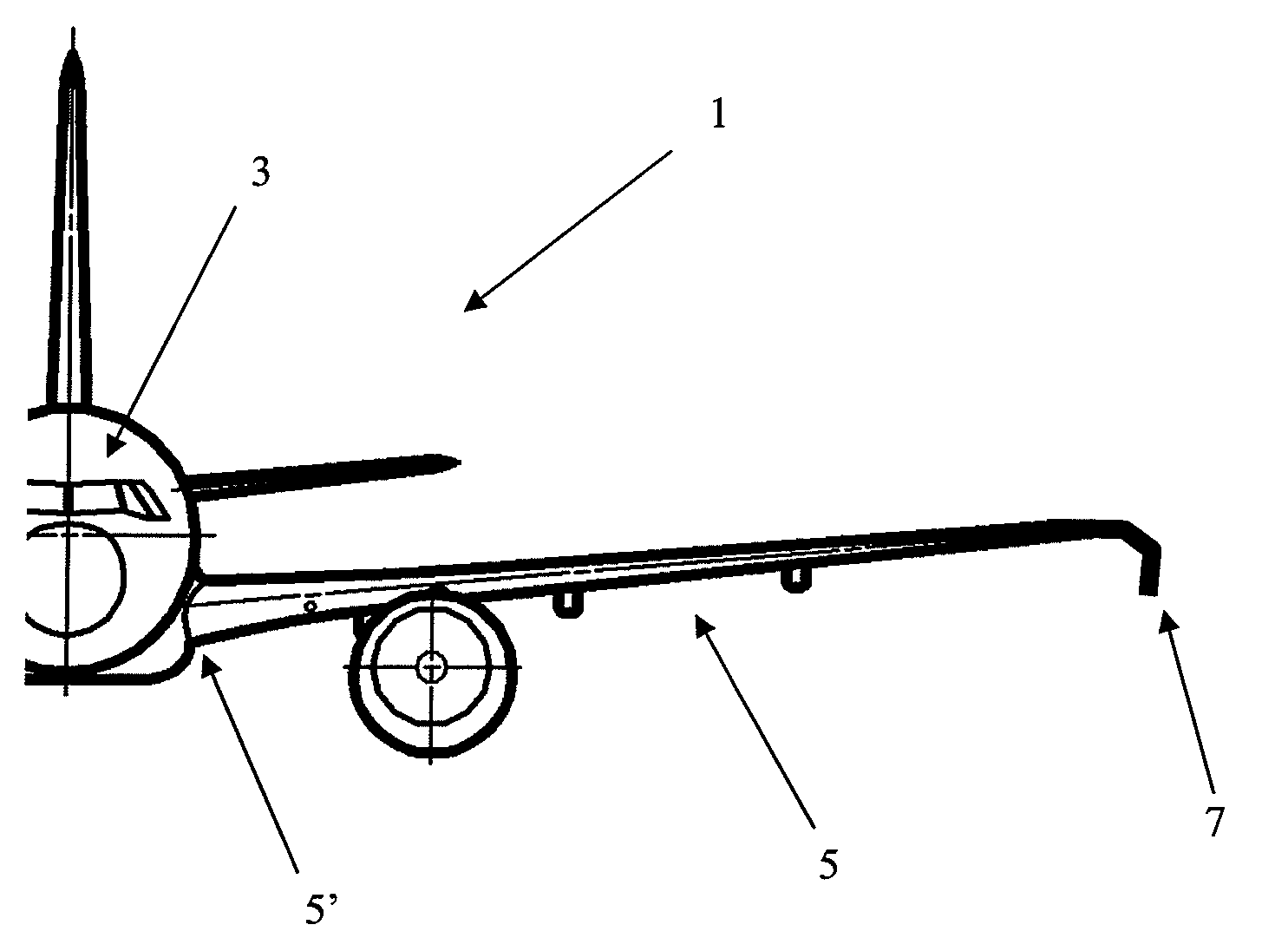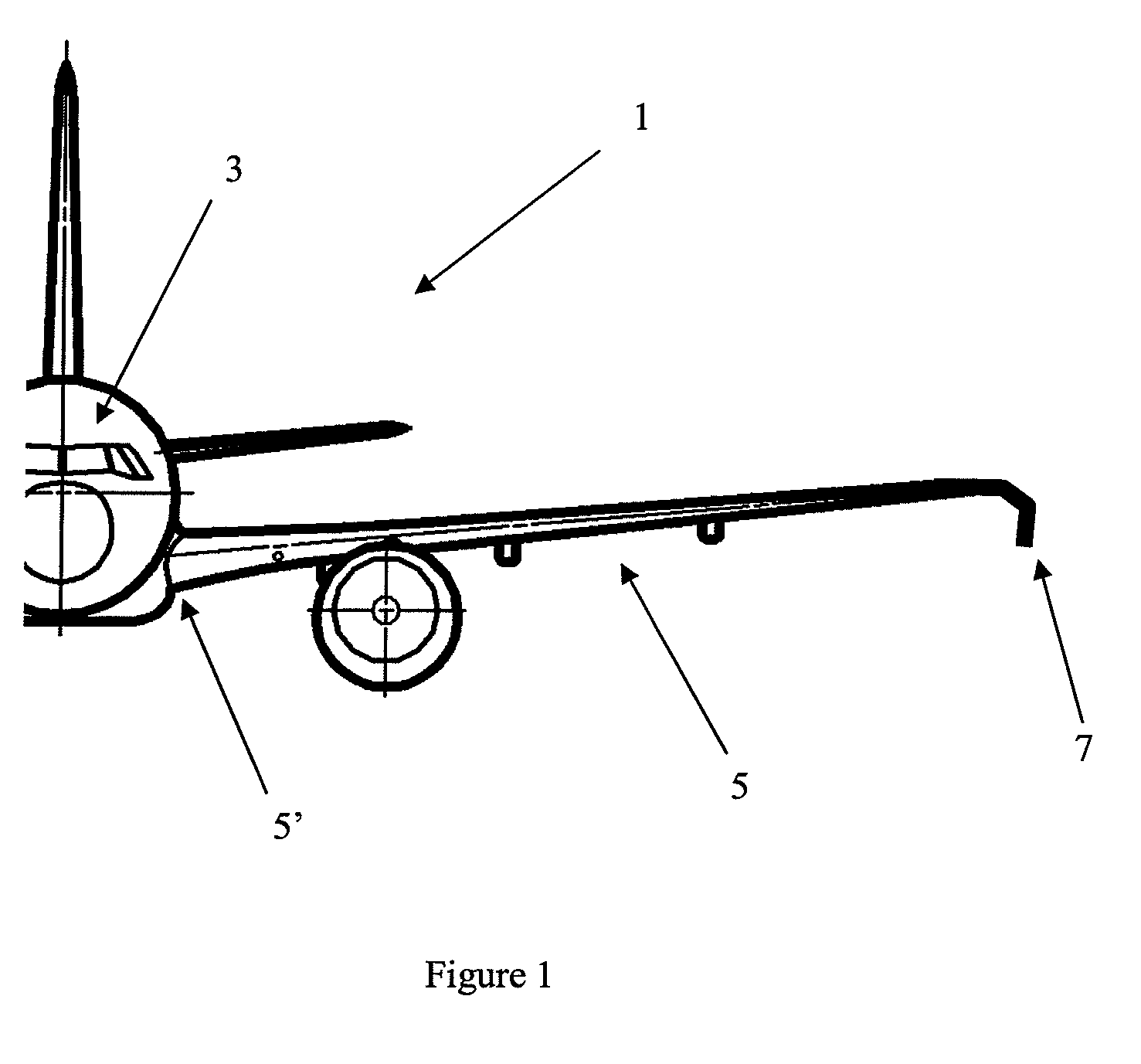Wing tip device
a technology of wing tip and wing tip, which is applied in the field of aircraft, can solve the problems of dictating the weight of the wing, significant increases in the wing root bending moment, etc., and achieves the effect of reducing the wing tip twisting, effective sweeping of the device, and increasing the wing loading
- Summary
- Abstract
- Description
- Claims
- Application Information
AI Technical Summary
Benefits of technology
Problems solved by technology
Method used
Image
Examples
Embodiment Construction
[0036]FIG. 1 is a front view of one half of an aircraft 1 according to a first embodiment of the invention. The aircraft comprises a fuselage 3, a wing 5 having a positive dihedral of seven degrees, and a wing tip device 7 located at the tip of the wing 5. The aircraft is shown flying at cruise speed in horizontal flight.
[0037]Referring to FIGS. 2a to 2d, the wing tip device 7 comprises a proximal end 9 and a distal end 11. The wing tip device 7 is connected to the wing 5 at the proximal end 9. At the proximal end the device is contiguous to the tip of the wing 5, and the respective chord lengths of the wing 5 and the wing tip 7 at this location are equal. The wing tip device 7 is thus blended with the wing 5.
[0038]According to the first embodiment the wing tip device has been retrofitted onto the aircraft, replacing a previous tip device. The connection (not shown) between the device 7 and the wing 5 is such that the device will shear off if it hits a foreign object with sufficient...
PUM
 Login to View More
Login to View More Abstract
Description
Claims
Application Information
 Login to View More
Login to View More - R&D
- Intellectual Property
- Life Sciences
- Materials
- Tech Scout
- Unparalleled Data Quality
- Higher Quality Content
- 60% Fewer Hallucinations
Browse by: Latest US Patents, China's latest patents, Technical Efficacy Thesaurus, Application Domain, Technology Topic, Popular Technical Reports.
© 2025 PatSnap. All rights reserved.Legal|Privacy policy|Modern Slavery Act Transparency Statement|Sitemap|About US| Contact US: help@patsnap.com



